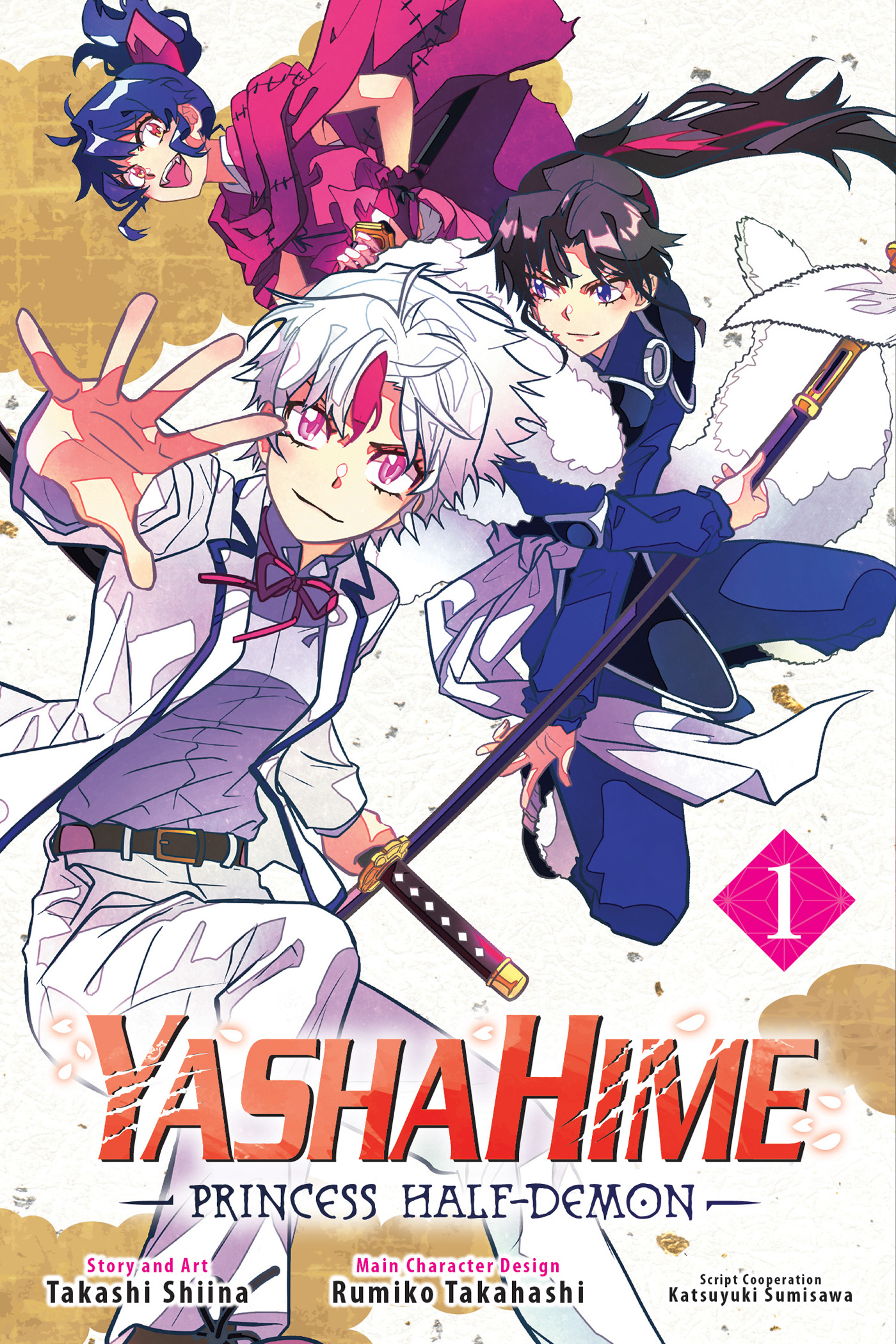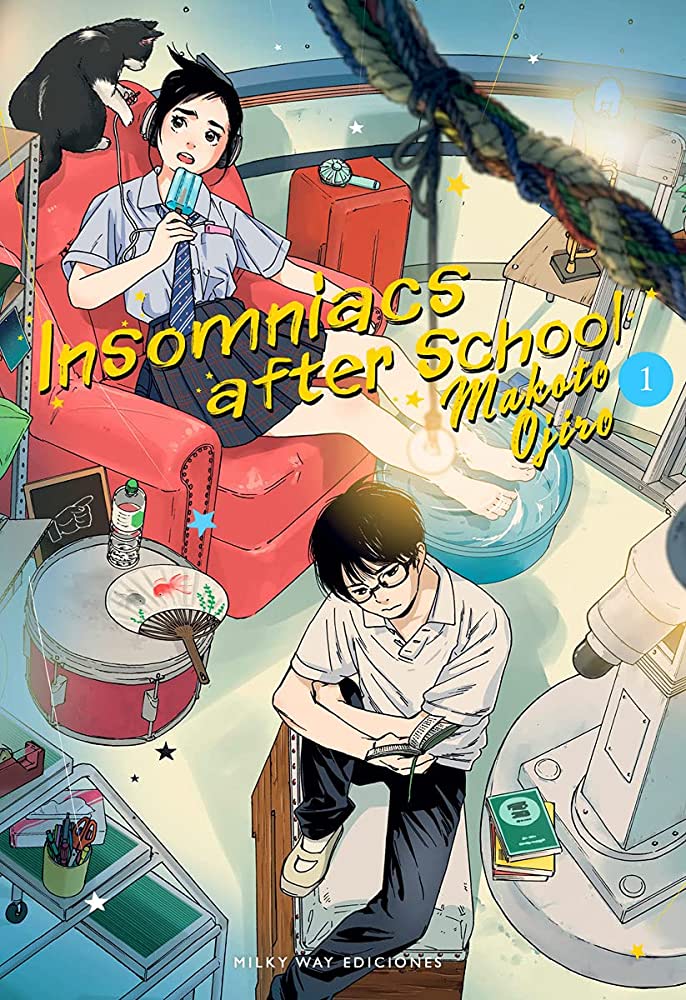In Manga: Sixty Years of Japanese Comics, author Paul Gravett argues that female mangaka from Riyoko Ikeda to CLAMP have often used “the fluidity of gender boundaries and forbidden love” to “address issues of deep importance to their readers.” Taeko Watanabe is no exception to the rule, employing cross-dressing and shonen-ai elements to tell a story depicting the “pressures and pleasures of individuals living life in their own way and, for better or worse, not always as society expects.”
Kaze Hikaru begins in 1863, a period of immense political and social upheaval in Japan, as the ruling class divided into factions loyal to the emperor (whose seat was in Kyoto), and factions loyal to the shogun (whose government was housed in Edo, or present-day Tokyo). Exacerbating the tension between these groups was the looming question of sakoku, or isolationism, a centuries-old policy that was crumbling in the face of military and economic pressure from the West, an unstable currency, and the dawning realization that certain Western technologies might have a role to play in the modernization of Japan. Taeko Watanabe draws on the events of the Bakumatsu (or late shogunate era, 1863 – 1867) for Kaze Hikaru, incorporating real historical figures into the story and dramatizing some of the major and minor conflicts of the period, from the Ikedaya Affair of 1864 to the Shinsengumi’s ambivalence about adopting rifles and canons into the samurai arsenal.
In the opening pages of Kaze Hikaru, Sei Tominaga, the heroine, lives a sheltered existence under the watchful eye of her father and older brother. Local rabble-rousers accuse the Tominagas of harboring spies at the medical clinic they operate and burn it to the ground, leaving Sei homeless and orphaned. Determined to avenge her family, Sei disguises herself as a boy, adopts the name Kamiya Seizaburo, and joins the Mibu-Roshi, a band of ronin who are fiercely loyal to the Tokugawa Shogunate. (The Mibu-Roshi would come to be known as the Shinsengumi, or “newly chosen corps.” At the height of their power, their ranks numbered around 300, and included a few members who were not born into the samurai caste.) Sei finds a mentor in the slightly older Okita Soji, an accomplished swordsman who acts as a den mother for new recruits. He accidentally discovers Sei’s identity, agreeing to keep her secret if she can demonstrate her worth as bushi, or an honorable warrior.
Watanabe’s art is clean and crisp, conveying enough period detail to firmly establish the setting without overwhelming the eye. A similar attention to facial features and body shapes also informs her nuanced and varied character designs, a godsend for a such a densely populated series. The action sequences are staged simply but effectively, conveying the skill and physical strength necessary to best an opponent in hand-to-hand combat, or suggesting the dangers of a night-time raid. But it’s in the everyday moments that Watanabe’s artistry really shines, as she has a talent for depicting the energy and activity of an urban marketplace, a soliders’ encampment, or a red-light district. We see the Shinsengumi recruits train, squabble, drink, gamble, and abuse their power with innkeepers and merchants, with careful attention paid to the objects they handle, the clothing they wear, and the posture they adopt as they interact with people of higher and lower social status.
Much of the drama — as well as the humor — in Kaze Hikaru stems from Sei’s attempts to fit in with her fellow soldiers by proving her worth as a man — no mean feat, given her small size, feminine appearance, and cultivated upbringing. (This is one of the few cross-dressing stories in which characters routinely ask the question on readers’ minds: “Aren’t you a little too pretty to be a guy?” Not surprisingly, some of the men desire Sei as an exceptionally handsome boy, further confusing our protagonist.) Sei’s greatest challenge, however, is concealing her deep love for Okita as both a mentor and a man. She wants Okita to respect her as a warrior, yet fears that her gender-bending transgression may prevent him from reciprocating her romantic feelings. It’s a classic shojo predicament — think of Lady Oscar and her manservant Andre — that simultaneously reveals Sei’s vulnerability and resolve. Her fierce commitment to the Shinsengumi, however, eventually prevails over her desire to reclaim her feminine identity, as she decides to honor Okita’s wish that she be Seizaburo and not Sei.
When contrasted with other Shojo Beat titles, Kaze Hikaru seems a little old-fashioned. Watanabe tends to favor neat grids and clearly-defined panels over the freer, more expressive layouts used in series like We Were There, Sand Chronicles, and Vampire Knight. The pace, too, is more stately, demanding a higher level of attention from the reader than most Shojo Beat titles; Watanabe’s characters discuss political matters, clan rivalries, and military strategy in considerable detail, giving some scenes the feeling of a Kurosawa movie. Even Sei and Okita’s friendship, rooted as it is in mutual warrior regard, seems out of step with the racier romances depicted in Absolute Boyfriend and B.O.D.Y.: would a school council president or magical girl swoon when she received a customized katana from the object of her affection, even if it was a sincere expression of his respect for her skill and courage?
Yet for all its squareness — or perhaps because of it — Kaze Hikaru remains my all-time favorite shojo manga. What makes Kaze Hikaru so compelling is the way in which Watanabe appropriates a very tired story — samurai seeks revenge in a time of social and political turbulence — and infuses it with a fresh, feminine sensibility. I might call it Satsuma Gishiden for Girls, but I think that downplays Watanabe’s achievement. She’s created an action-filled drama in the vein of The Rose of Versailles or They Were Eleven but transplanted the setting from the relatively safe, romanticized worlds of the French Revolution and outer space to a period in Japanese history in which the male-identified virtues of courage, discipline, and patriotism dominated public discourse. She may not have intended it as a bold political statement, but Watanabe has done something extraordinary: she’s given girls the freedom to project themselves into Japan’s past without gender constraints. American artists looking to connect with female readers would do well to read Kaze Hikaru for inspiration — there’s a great graphic novel to be written about a cross-dressing Minuteman or Union solider, and Sei would make a terrific prototype for its spunky heroine.
Review copies of volumes 17 and 18 provided by VIZ Media, LLC. This is an expanded version of a review that appeared at PopCultureShock on 5/17/07.
KAZE HIKARU, VOLS. 1-18 • BY TAEKO WATANABE • VIZ • RATING: OLDER TEEN (16+)




Eva Volin says:
This post makes me so happy I could cry. Let’s hear it for great unsung manga. May they be sung. Or something.
Sarah says:
I’m so glad to see some love for this incredible series! I worry sometimes that it’ll be canceled for lack of sales — they stopped selling it in stores here around volume 12 (I think), and I could have sworn that amazon.com listed volume 19 and later took it down. It’s gotten to the point that I’ve started buying the original Japanese volumes from 19 on and trying to figure out the story from the art. I don’t mind the longer gaps between release because I know it’s a very difficult manga to translate, but I’m beginning to fear that Viz will stop see the worth in it. And that would be a huge shame, because Kaze Hikaru is one of the smartest, funniest, thrilling-est series I’ve picked up in my 7+ years of manga-reading.
Sarah
Katherine Dacey says:
I feel the same way about Kaze Hikaru: I understand why it isn’t charting on the NY Times Manga Bestseller list, but I hope VIZ publishes the full run of the series, however many volumes it ends up being. (I think it’s up to 27 in Japan, give or take a volume.) I’m also hoping that other bloggers will take up the cause and promote it — it remains one of the least-reviewed series in the Shojo Beat line, I think because of its complexity and density. That’s a pity, because those are two of the things I like best about Kaze Hikaru. I feel like I’m reading literature and not just brain candy.
Sarah says:
Oh dear. I just found the volume 19 amazon took down:
http://www.amazon.com/Kaze-Hikaru-Vol-Taeko-Watanabe/dp/1421528045
And the date it has listed is Augst 2011! That’s a full year from volume 18; I’ve never seen a delay that long for a manga that’s so far behind the original release!
Oh wait though, this link: http://aaaanime.com/item/Books/1421528045.html
has it listed in early November of this year. I wonder what’s going on…
Sarah
Katherine Dacey says:
I just checked a spreadsheet that I received from VIZ in late May. That document (which lists new titles through January 2011) indicates a release date of 11/2/10. Just to be on the safe side, I also checked Right Stuf!, which is also showing that volume 19 will ship on 11/2/10. I think we’re OK for now!
SafetyGirl0 says:
RightStuf is always the last to update. What’s more troubling for volume 18 is the fact that it’s disappeared from Simon & Schuster’s website and I can only get to it through Google cache. Other online booksellers confirm the August 2011 date, which is depressing. Between the demise of CMX and whatever is going on at Del Rey, I am quickly losing my favorite manga before their time.
But I come here to praise Kaze Hikaru, not to bury it. (I hope) It really is an under-appreciated gem, but to give Viz credit, they tried – it was one of the original titles in the Shojo Beat magazine but I don’t know how well it fit in with the demo that Viz was wanting. It’s not shojo in the rather narrow sense of what’s become marketable, like Nodame Cantabile, it’s another one that has a hard time finding its audience despite being popular back in Japan.
My big obsession is the Shinsengumi, which comes from my great love of Rurouni Kenshin and its version of Saitou Hajime. And having read/watched a lot of Shinsengumi series, this one is a gem. Most Shinsengumi stories peter out after the glories of the Ikeda-ya affair, because it gets into dense politics and sad stuff as members start defecting and dying. I suspect that’s why Peacemaker stalled out. However, Kaze Hikaru takes this period between the summer of 1863 and when the Big Events pick back up in 1868 and runs with it. It’s refreshing to read something that is not afraid that what it’s trying to accomplish – and she’s letting the Sei/Okita thing play out. She’s not rushing. Watanabe-sensei is an experienced storyteller and I believe those with the patience to stick with it will be satisfied. It’s 28 volumes and going right now, and from picture-divining the latest issues of Flowers, there’s still a lot to go.
It’s not that she’s read hundreds of books about the Shinsengumi (her freetalks are AWESOME) and the setting that makes it so good – it’s that she has a wonderful grip of her characters. Even the secondary characters – heck, even the ones that do a chapter or two – feel refreshingly *real*, with motivations and dreams all their own – nobody is allowed to be a simple cardboard character. Of the stories that I’ve consumed, this does the best at making the entire *group* come alive.
I appreciate Viz for licensing it, and the job that translator and later translator-adaptor Mai Ihara does – she retains not only the tangle of historical details and persons, but also the emotion and the humor. (volume 11’s death made me cry, even though I knew what was going to happen!) I hope it gets discovered by more advocates in the blogging world, so thank you so much for covering this.
Sarah says:
I’m getting so nervous about this title that any change seems like its death knell in the US! Well, let’s all just hope.
Sarah
Katherine Dacey says:
@SafetyGirl0: Thank you for your thoughtful comments about the Shinsengumi! It’s easy to dismiss Kaze Hikaru as a shojo samurai manga, but as you point out, Watanabe does an excellent job of making the waning years of the Tokugawa shogunate come to life. It’s historically informed without being pedantic, which is one of the reasons I love it.
@Sarah: I have an advanced copy of volume 18, courtesy of VIZ, so I can assure you it exists! The VIZ website gives the release date as 8/3/10: http://www.viz.com/products/newreleases/index.php?d=201008. If you’re worried about volume 19 disappearing from Amazon, I’d be happy to follow up with VIZ to find out what’s happening. They’ve been good about finishing series they’ve started — even titles that haven’t sold well — so I’m not panicking yet.
Sarah says:
I would love to hear about volume 19’s release date! I’ll be getting 18 as soon as it’s available, and I hope I won’t have to wait a year for 19. I’ll miss Sei too much!
Sarah
Katherine Dacey says:
@Sarah: I emailed my contact at VIZ last night. He reports that volume 19 of Kaze Hikaru isn’t showing up on his roster of 2010 titles right now, so it does appear that Amazon’s 2011 release date might be plausible. I’ll continue to find out what I can, and if I learn anything more concrete (e.g. new release date), I will post it at my site.
Sarah says:
Ack! Thank you for getting the info though.
Sarah
Catherine says:
Whenever a new volume of Kaze Hikaru comes out, I always look for reviews on the latest volumes even though I never find them. My preorder for 18 came today and I devoured it and here I am, online. Kaze Hikaru may not be a typical shojo manga, but it really is a gem. The manga market is flooded with a lot of slice of life high school romances that supply nothing more than instant gratification and although those are good on occasion, I’m not in high school anymore. I’m glad you reviewed it. I hope more bloggers will do the same and get this fantastic series talked about.
Anyways, I was going to preorder volume 19 on RightStuf, but before I did, I wanted to see the cover art. So I checked Amazon and other sites only to find that it wont come out for a full year? My heart sunk. I’m really hoping that this is a glitch because it’s painful enough waiting three months between each volume. I know the industry has been hurting for a while now, but if Viz, one of the most stable publishers, is pushing back this series, it makes me very nervous. I remember them posting a while back that they were not dropping any series after the layoff, but desperate times call for desperate measures, and Kaze Hikaru is an extremely long series and if it isn’t doing well in sales, they could very well change their minds. Think of Eroica. I don’t want Kaze Hikaru to just be forever incomplete. I know I’m probably just taking things out of context and that it’s just a delay, but…
Here’s to hoping that it’ll still come out in November as previously scheduled, or, at the very least, February. ;/
Katherine Dacey says:
I tend not to review individual volumes of long-running series, but your comments are making me think I should be doing this for Kaze Hikaru, if only to prove to VIZ that there’s a small but devoted audience for the series. I will stay on top of the story, and if I learn something new beyond what’s already been posted here in the thread, I will be sure to share it with everyone else.
And honestly, I’m surprised by the delay, too — Kaze Hikaru can’t be VIZ’s only under-performing title. At least VIZ has a good track record (in the last 8 or 9 years, that is), of seeing a series to its conclusion. Let’s hope they do so with Kaze Hikaru.
Christina says:
I’m sure it has to be a glitch? I mean a year long is a awfully long time. Next August? That seems beyond ridiculous because there are still viewers for this wonderful series as you can see. Especially since they are already near vol 30 in Japan. Definitely not. That is way too long. Every three months is fine, but 12 months later? Thats just. . ridiculous.
Anyways, That is a rather lovely review. @_@ And I hope Viz goes on with the November publish and not. . a whole. . year from now. Really. If Viz drops this I might as well drop anything I have from Viz on my bookshelf and not purchase manga for a long while.
Katherine Dacey says:
Looking at Amazon, it appears that VIZ has postponed (or possibly canceled) a few titles. I haven’t been able to get a straight answer about when we’ll see the next volume of Kaze Hikaru, but I will continue to pester my contact for a concrete answer. I’d be very sad if VIZ put it on permanent hiatus!
Christina says:
Sad? That be horrible! I already have all 17 volumes – 18 soon. They cant really just stop a manga like that with all those titles release. It might not be as popular as say Vampire Knight or whatever – but really. That’s pretty much the only thing Im buying right now is Kaze Hikaru and Gakuen Alice.